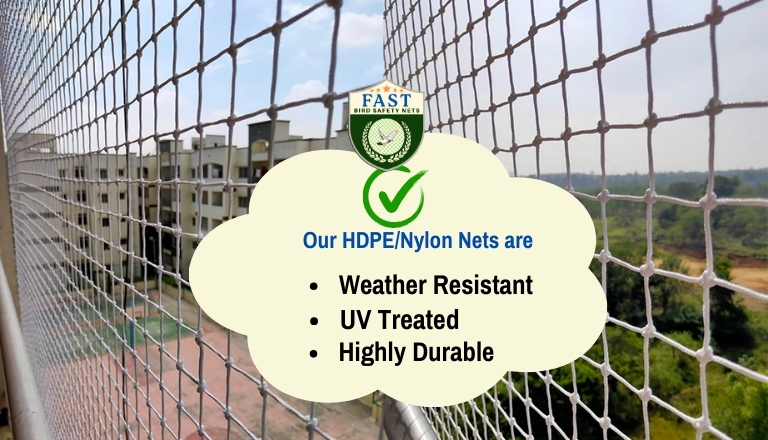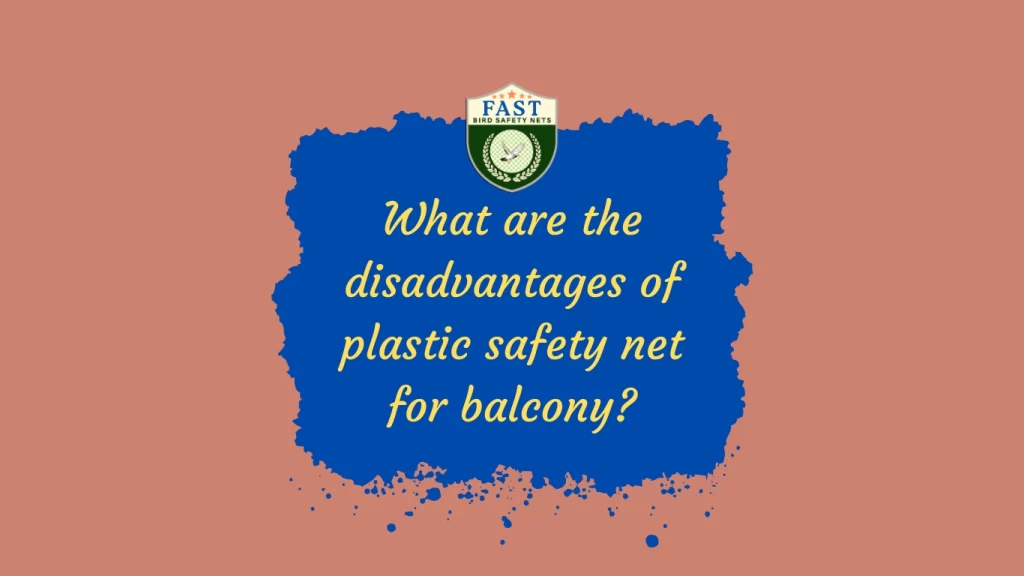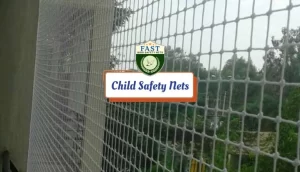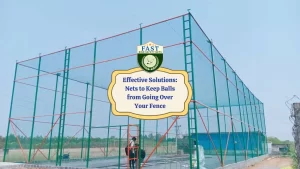Plastic safety nets for balconies offer certain advantages, such as affordability and ease of installation, but they also come with several disadvantages:
Limited Durability: Plastic safety nets may not be as durable as other materials like nylon or stainless steel. They are more prone to wear and tear over time, especially when exposed to harsh weather conditions such as sunlight, rain, and wind. This can result in the nets becoming brittle, losing their strength, and requiring frequent replacement.
UV Degradation: Plastic safety nets are susceptible to UV degradation, meaning they can deteriorate when exposed to sunlight over time. This can lead to the nets becoming weak, discolored, and less effective in providing protection. Regular exposure to sunlight can accelerate the degradation process, requiring homeowners to replace the nets sooner than expected. Whereas the nets made of Nylon or Polyethylene are weather resistant and can withstand extreme weather settings.
Limited Strength: Compared to other materials like nylon or stainless steel, plastic safety nets may have limited strength and load-bearing capacity. They may not be suitable for supporting heavy objects or withstanding significant impact, posing a risk of breakage or failure if subjected to excessive force.
Risk of Tearing: Plastic nets are more prone to tearing or puncturing compared to other materials. Sharp objects or protrusions on the balcony, such as screws, nails, or rough surfaces, can easily damage the plastic nets, compromising their effectiveness in providing protection against falls or preventing birds from entering.
Environmental Impact: Plastic safety nets contribute to plastic pollution and environmental degradation, especially if not disposed of properly. When the nets reach the end of their lifespan and require replacement, they add to the growing amount of plastic waste, posing challenges for waste management and recycling efforts.

Limited Aesthetic Appeal: Plastic nets may not offer the same aesthetic appeal as other materials like nylon or Polyethylene. They can appear less visually appealing and may detract from the overall appearance of the balcony, especially in residential settings where aesthetics are important.
Maintenance Challenges: Plastic safety nets may require more frequent maintenance compared to other materials. They can accumulate dust, dirt, and debris, making them appear unsightly and reducing their effectiveness. Cleaning plastic nets may be more challenging, as harsh chemicals or abrasive cleaners can further degrade the material.
Fire Hazard: Some types of plastic safety nets may pose a fire hazard if exposed to flames or high temperatures. Certain plastics are highly flammable and can melt or release toxic fumes when ignited, posing a risk of fire spread and endangering occupants of the building.
Overall, while plastic safety nets may offer a cost-effective solution for balcony safety, homeowners should carefully consider their disadvantages and weigh them against the benefits before making a decision. Depending on the specific requirements and preferences, alternative materials such as Nylon or HDPE Nets may offer better durability, strength, and longevity for balcony safety applications.






